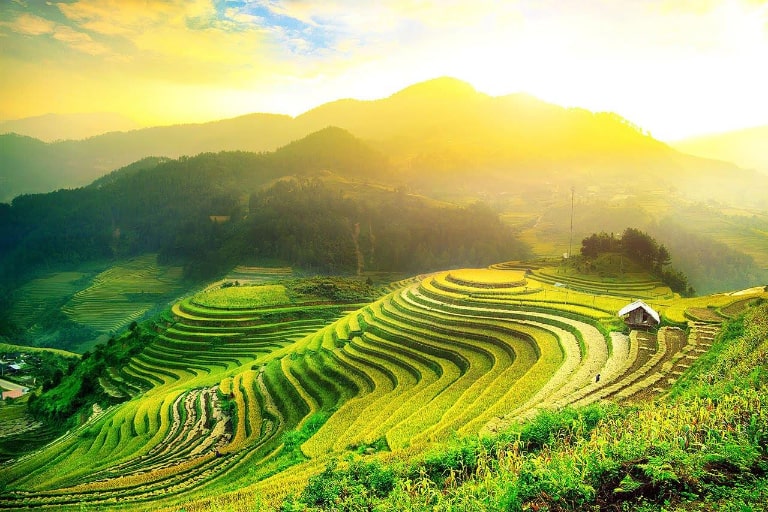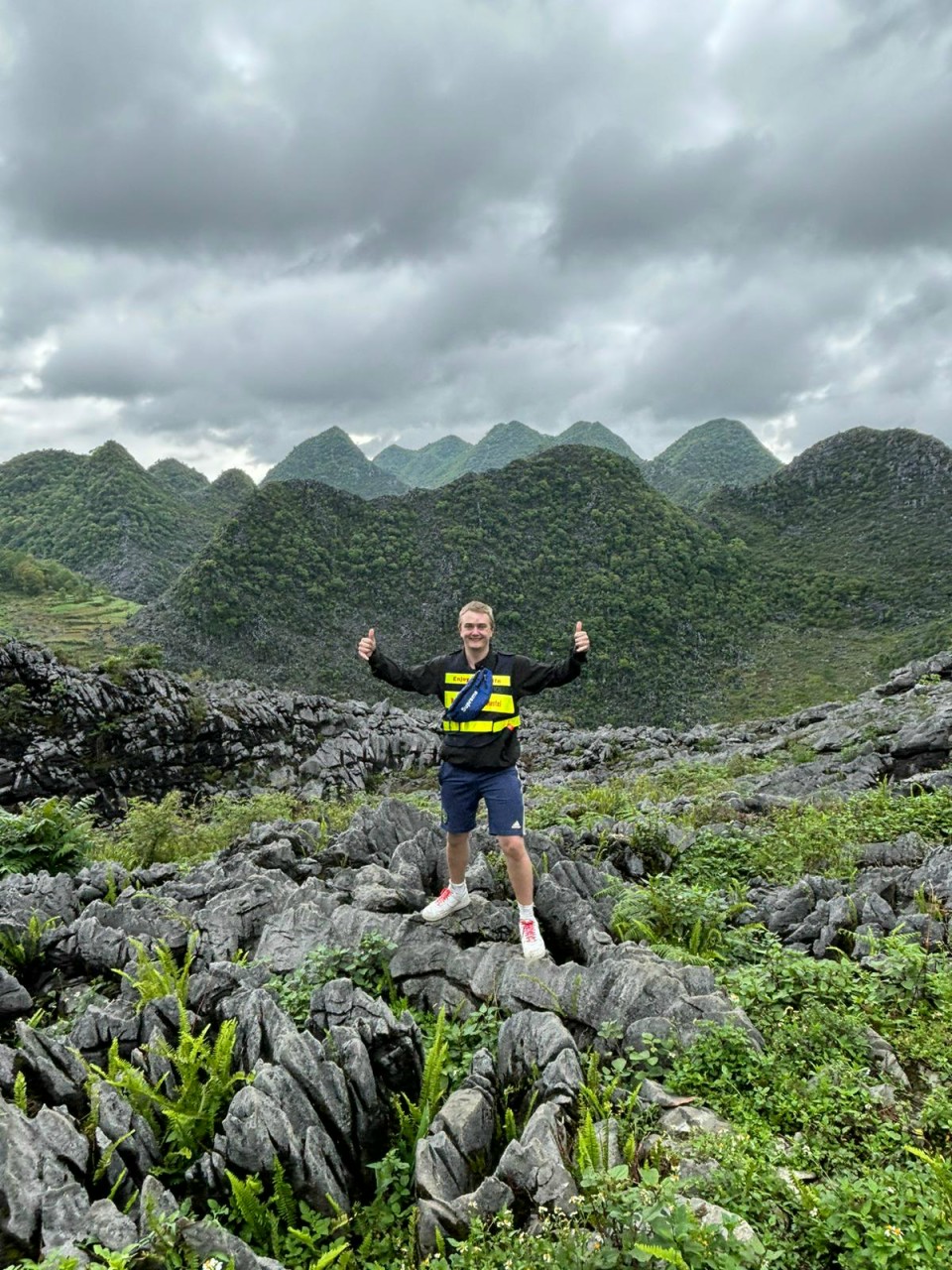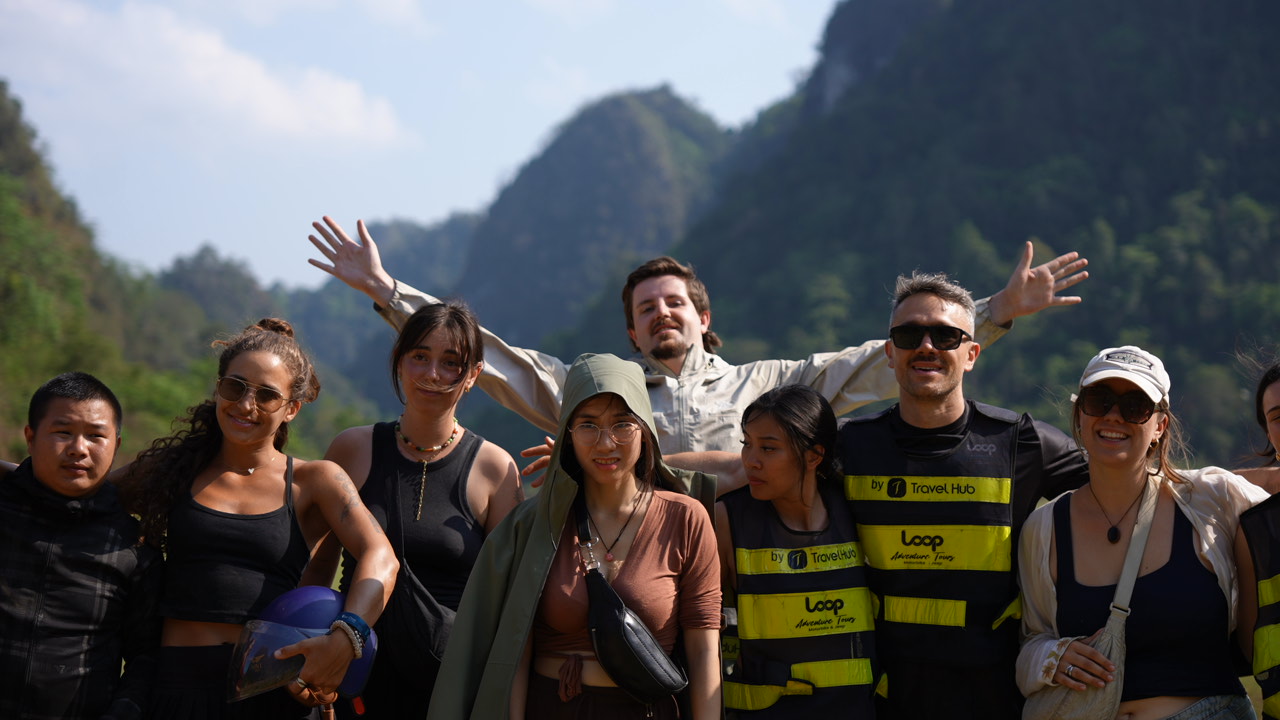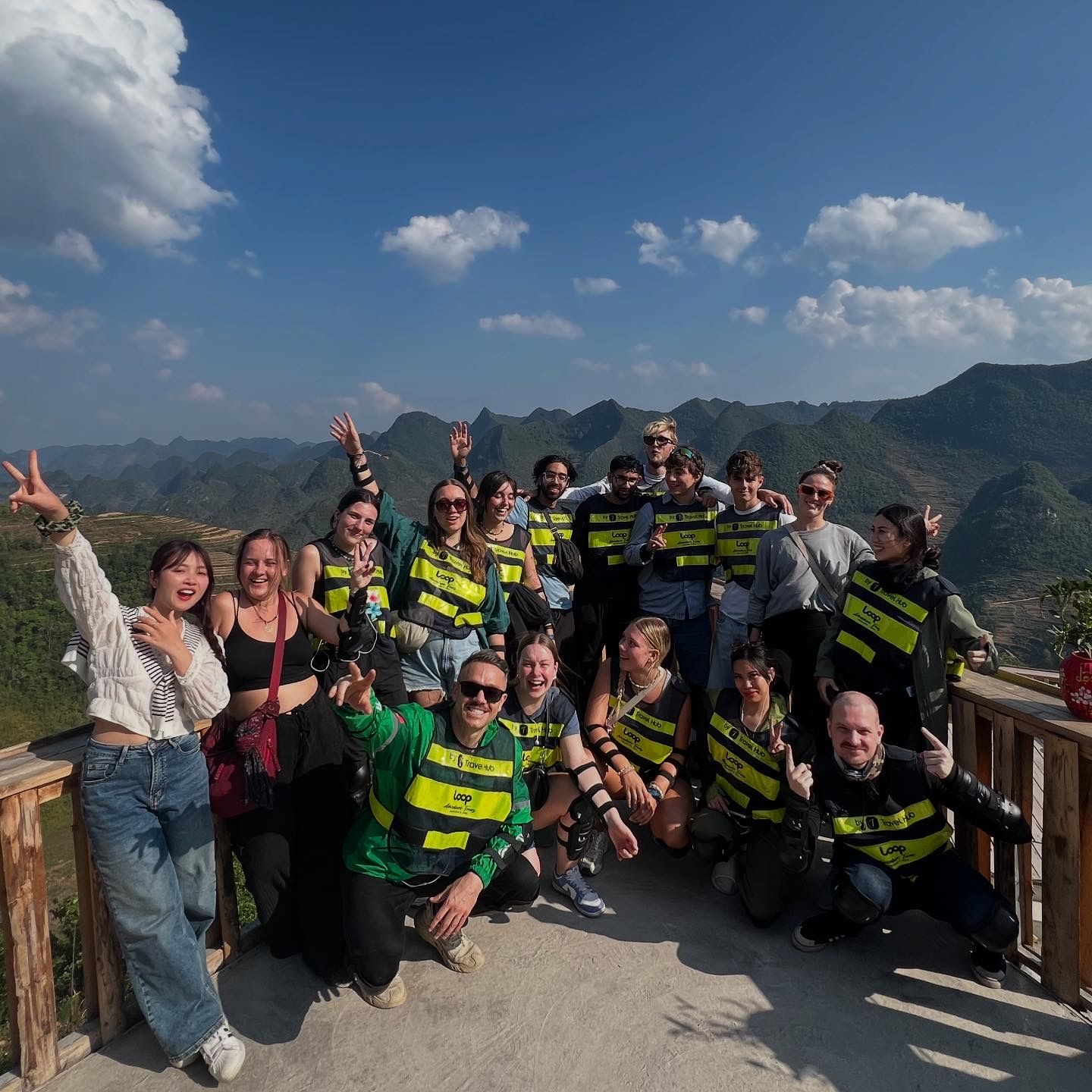When the first rains arrive and farmers flood their paddies, Ha Giang in May (water pouring season) turns mirror-like. Rice terraces brim with reflective water, bouncing sunset gold and stormy blues back to the sky. Temperatures climb, showers pop up in the afternoon, and the remote valleys around Hoang Su Phi, Du Gia, Quan Ba and Yen Minh become a photographer’s playground. This guide covers May weather, the best terrace locations, 2–4 day itineraries, costs, what to pack, safety for the early-rainy season, photo tips, and FAQs—so you get the shots and the experience you came for.
Recommended Tours for You:

Weather in May: what it actually feels like
-
Temperature: warm to hot. Expect 24–31°C (mid-70s to high-80s °F) in the valleys; cooler at altitude and on passes.
-
Rain & humidity: the pre-monsoon pattern brings brief afternoon showers or thunderstorms. Mornings are often clear, with dramatic clouds building later.
-
Road conditions: mostly dry in the morning, slippery after showers—watch for algae on concrete slopes and loose gravel at corners.
-
Daylight: long days, ideal for sunrise terrace reflections and golden-hour rides.
Bottom line: Ha Giang in May is warm, lush, and occasionally wet—plan early starts, long siestas, and cautious afternoon travel.
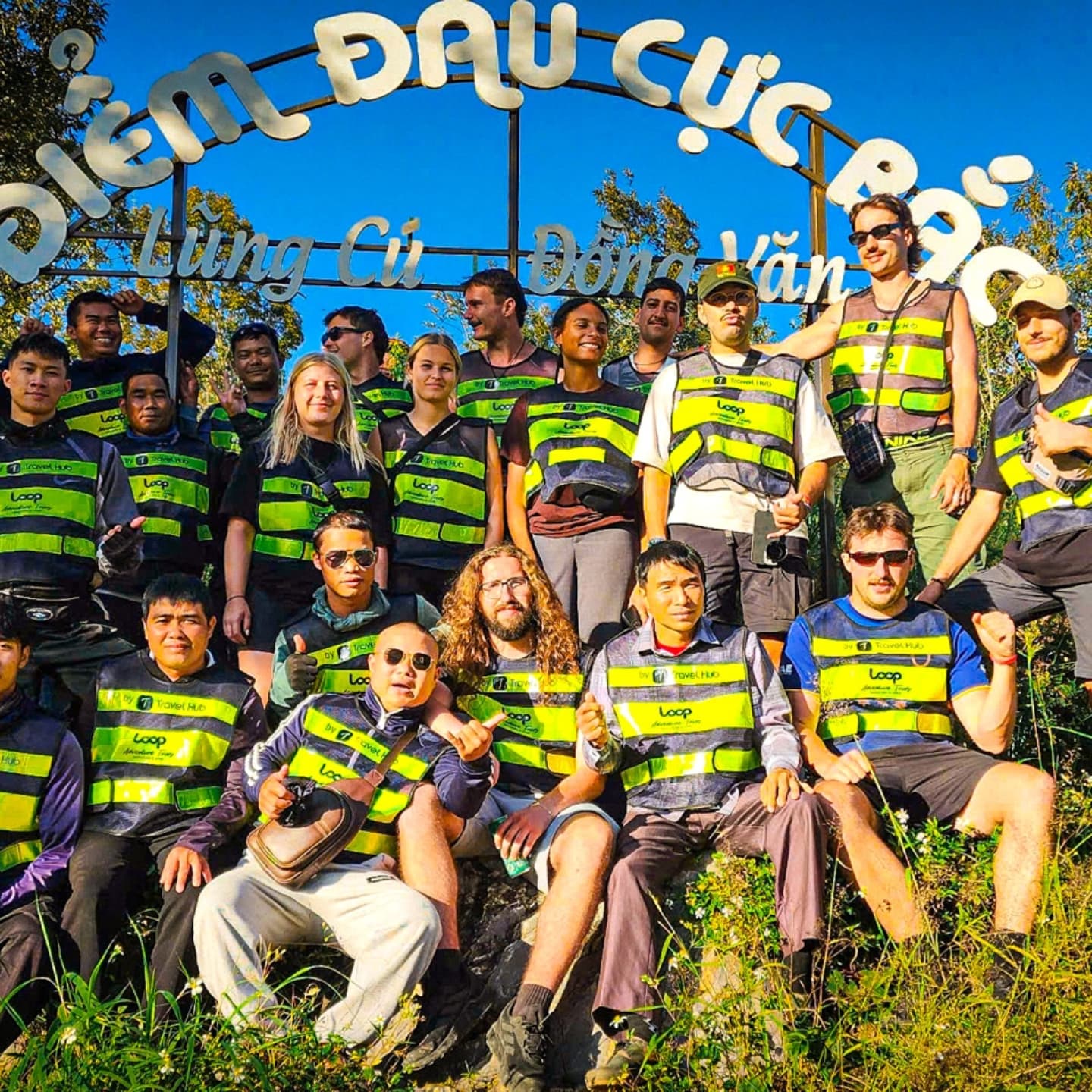
Why visit during water pouring season?
-
Mirror-like terraces: flooded paddies create spectacular reflections—you’ll capture mountains, clouds, and village life in one frame.
-
Real farm life: it’s transplanting season; you’ll see families working together, buffaloes preparing fields, and lively terrace rhythms.
-
Fewer crowds than October–November: prices and availability are friendlier outside the buckwheat bloom peak.
-
Green awakening: streams run clearer, Nho Que River glows emerald, and hillsides turn a juicy green.
Trade-offs: warm humidity, chance of short storms, and occasional landslide cleanup after heavy rain (ask locals before committing to small backroads).

Best places to see water pouring rice terraces in Ha Giang
-
Hoang Su Phi (southwest Ha Giang): the province’s terrace capital. Prioritize Ban Phung, Nam Ty, Thong Nguyen, Ban Luoc, Ho Thau for grand staircases and perfect reflections.
-
Du Gia (Bac Me district): gentler terraces around Du Gia waterfall and village lanes—great for evening light and homestay culture.
-
Quan Ba – Nam Dam: rolling hills and gardens; terraces are smaller but photogenic with Heaven’s Gate backdrops.
-
Yen Minh valleys: ribbons of terraces between pine ridges; pair with a pine-forest ride for variety.
-
Around Dong Van & Meo Vac: the karst plateau is rock-forward, but small valleys near Lung Tam and side roads hide modest paddies for intimate portraits.
Etiquette: these are working fields. Stick to footpaths, ask before entering a terrace, and thank people with a smile or a purchase at the local market.
May-friendly itineraries (2–4 days)
Option A – Classic Loop with terrace accents (3D2N)
Day 1: Ha Giang → Quan Ba Heaven’s Gate → Yen Minh (valley terraces) → Sung La → Vuong Palace → Dong Van (Old Quarter).
Day 2: Lung Cu morning → Ma Pi Leng Pass side paths → optional Nho Que River boat (15:00) → Meo Vac (family dinner).
Day 3: Meo Vac → Du Gia (terrace reflections & waterfall) → Ha Giang (evening bus to Hanoi).
Why it works: balances headline scenery with Du Gia reflections in late afternoon.
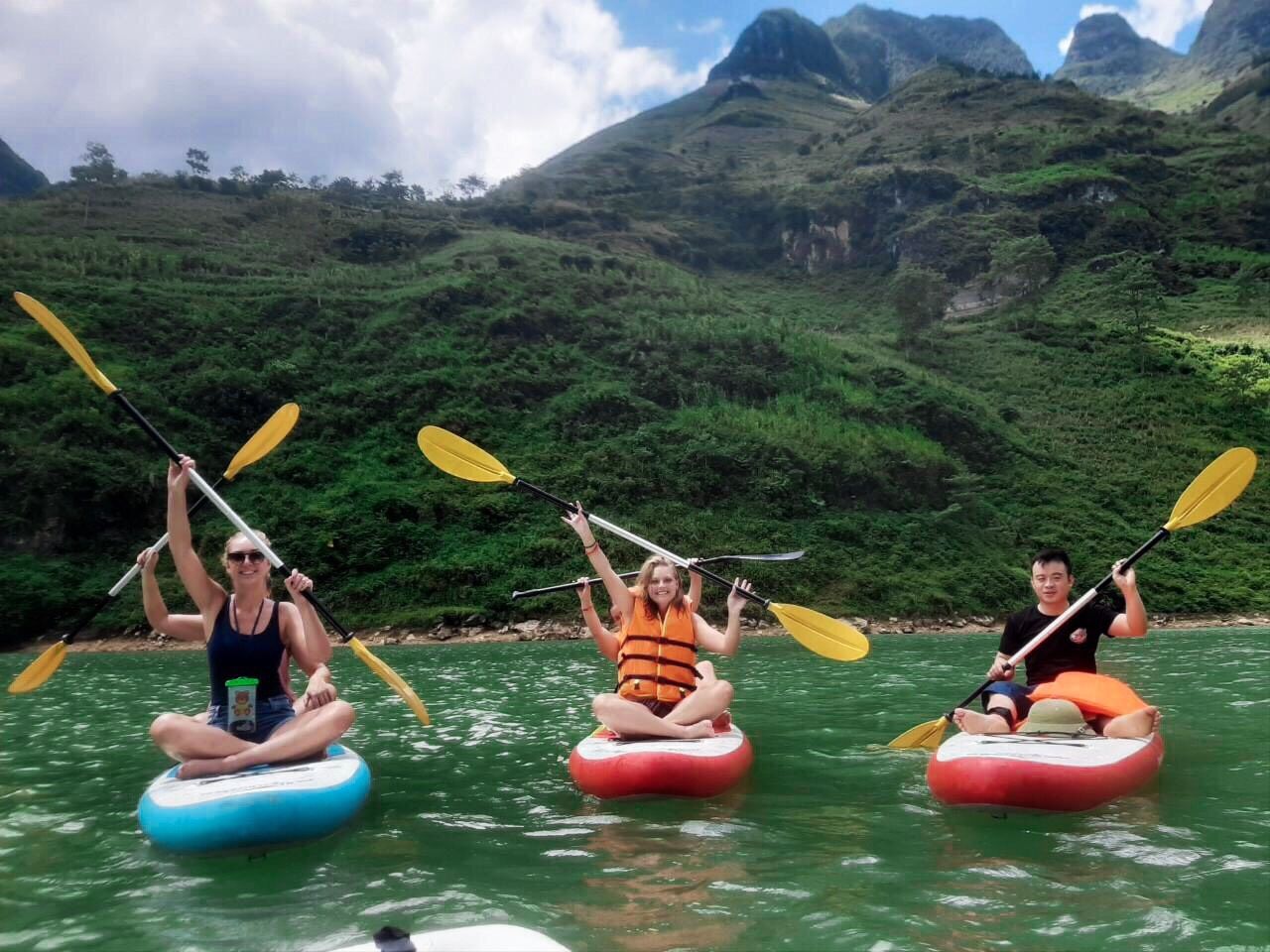
Option B – Terrace-first photo trip (2D1N + extension)
Day 1: Ha Giang → Hoang Su Phi via Tan Quang; sunset at Ban Phung.
Day 2: Sunrise Thong Nguyen → Nam Ty/Ban Luoc → return Ha Giang or extend 1 day to Du Gia for a softer valley set.
Option C – Four days, slow & scenic (4D3N)
Combine Hoang Su Phi (Day 1–2) for terraces and Dong Van–Ma Pi Leng–Du Gia (Day 3–4) for cliffs + river, keeping afternoons flexible for rain breaks and evening light.

Costs (per person, 2025 reference)
-
Motorbike rental: 180,000–300,000 VND/day; fuel ~60,000–120,000 VND/day.
-
Easy Rider group tours (3D2N–4D3N): 2.6–6.5M VND (bike + licensed driver/guide, fuel, homestays, some meals).
-
Self-ride guided packages (3D2N–4D3N): 3.2–5.8M VND (bike, fuel, guide, basic gear, homestays).
-
Car/van with driver: 2.5–5.0M VND/vehicle/day split among 4–10 travelers.
-
Add-ons: Nho Que boat 100k–150k VND; small entrance fees (Lung Cu/Vuong Palace).
-
Meals: homestay dinners 120k–250k VND; lunches 60k–120k VND.

What to pack for Ha Giang in May
-
Rain-smart layers: light rain jacket, quick-dry clothing, pack cover, and zip-locks for electronics.
-
Riding basics: certified helmet, gloves with grip, long pants, sturdy shoes with traction.
-
Sun & hydration: sunscreen, sunglasses, hat, refillable bottle or hydration pack.
-
Tech & docs: phone mount, power bank, license + IDP (if riding), travel insurance, small bills (5k–50k VND).
-
Photography kit: microfiber cloths, ND/CP filters for reflective paddies, silica gel packs for humidity.
Safety & etiquette for the early-rainy season
-
Daylight only. Afternoon showers + hairpins + livestock make night riding risky.
-
Plan around storms: start early, keep a 60–90 minute buffer in the afternoon.
-
Cornering on wet surfaces: look through the turn; use engine braking; avoid hard front-braking on mossy concrete.
-
Check the bike each morning: tires, brakes, lights, horn, chain lube.
-
Road updates: ask locals about fresh slides or roadworks, especially on smaller connectors to Hoang Su Phi.
-
Respect fields & people: stay off embankments; don’t fly drones over workers without permission.
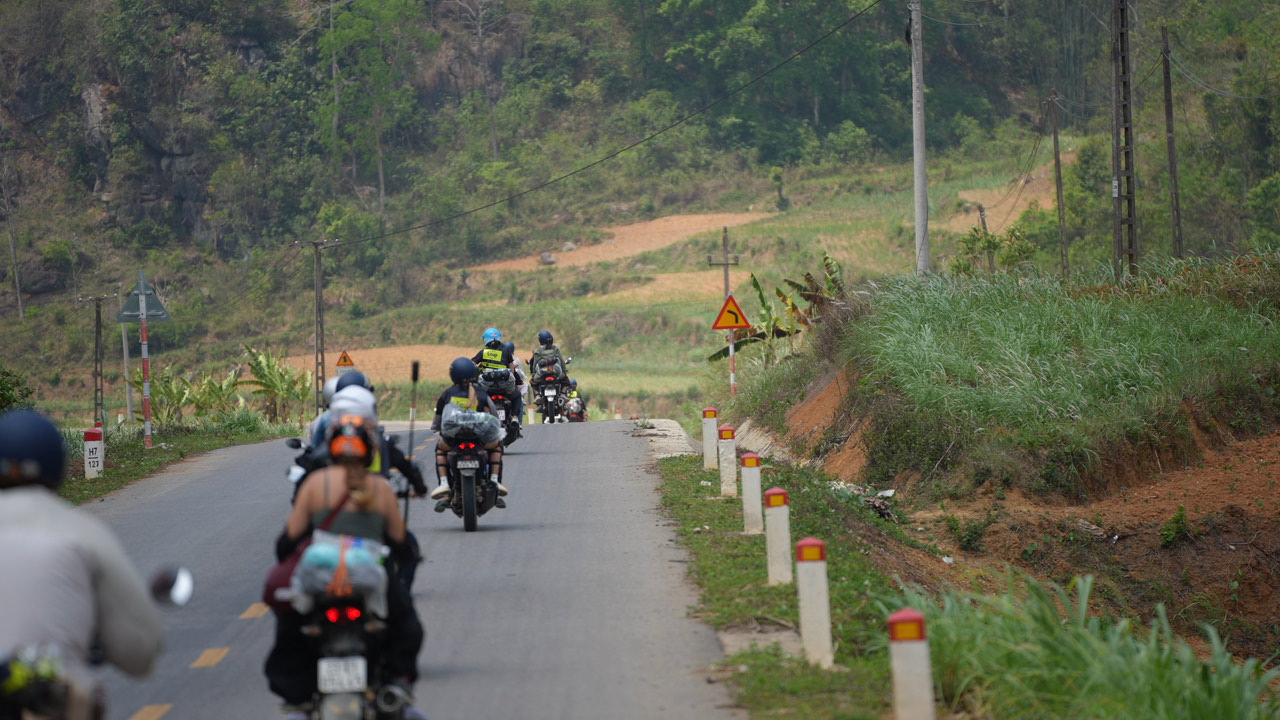
Photography tips for water pouring season
-
Timing: sunrise and late afternoon create the strongest mirror effects; mid-day is flatter but can work with polarizers.
-
Angles: shoot high for patterns, low for sky reflections. Use leading lines along terrace edges.
-
Filters: a circular polarizer tames glare; a 3–6 stop ND allows silky water and moving clouds.
-
Weather drama: wait 15–30 minutes after a shower—cloud textures and puddle reflections often peak right after rain.
-
Human scale: include farmers, buffalo, or tools to give terraces context and emotion.
Getting there & getting around
-
Hanoi → Ha Giang City: overnight sleeper or VIP cabin buses (≈6–7.5 hours). Day limousines run too.
-
Tour styles:
-
Easy Rider (pillion): ride behind a licensed local—great in wet corners.
-
Self-ride (guided): 110–150cc behind a lead guide; bring license + IDP and rain gear.
-
Car/van with driver: safest for families or photo teams carrying multiple bodies/lenses.
-

FAQs – Ha Giang in May (water pouring season)
Is May too rainy to enjoy the Loop?
No. Expect short, sometimes intense showers rather than day-long rain. Start early and finish rides before dusk.
Are terraces guaranteed to be flooded?
Most terraces in Hoang Su Phi and many valleys are flooded or being transplanted in May, but timing varies by village and altitude.
Can beginners self-ride in May?
Possible, but choose Easy Rider or car/van if you’re uneasy about wet surfaces and variable visibility.
What about leeches or bugs?
Rare on the Loop roads; wear shoes with coverage in muddy terrace paths and carry repellent for village walks.
Conclusion
Ha Giang in May (water pouring season) is about reflections, rhythm, and fresh green—terraces like stairways of mirrors, river canyons glowing after rain, and villages bustling with transplanting work. Plan early starts with a flexible afternoon buffer, choose your style (Easy Rider, self-ride, or car/van), and build your route around Hoang Su Phi + Du Gia while still savoring the iconic Ma Pi Leng viewpoints. Pack rain-smart layers and photo filters, respect the fields and the people tending them, and travel only in daylight. Do that, and May will hand you exactly what you hoped for: cinematic terrace reflections and a camera roll full of living landscapes that define northern Vietnam.
Plan your adventure today! For more details and personalized support, contact Thelooptours Hotline: +84329196074.


